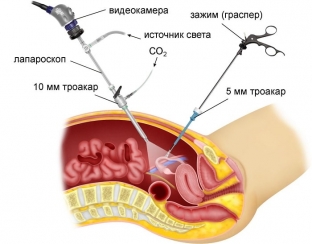Ectopic pregnancy is a pathological condition that is quite common in modern gynecological practice. Almost 90% of all cases of ectopic pregnancy is tubal pregnancy – a condition when the fetal egg stops and develops in the lumen of the fallopian tube. This is primarily due to the fact that in recent years the incidence of adhesions in the uterine appendages has significantly increased, as a result of which such a pathology occurs.
Aborted tubal pregnancy in a large percentage of cases leads to the development of infertility, which is why the treatment of ectopic pregnancy is a very serious medical issue.
Modern methods of treatment of ectopic pregnancy
An ectopic pregnancy can be treated conservatively and surgically. To date, conservative treatment is recommended only in case of diagnosing a progressive tubal pregnancy, in other situations, surgical intervention is recommended.
Surgical treatment of ectopic pregnancy can be carried out through laparoscopic or laparotomic access, while two types of operations are performed: conservative plastic and radical. The choice of the volume of surgical intervention depends on the characteristics of the course of ectopic pregnancy in each individual case.
Treatment of ectopic pregnancy:
- conservative treatment of ectopic pregnancy;
- surgical treatment of ectopic pregnancy;
- rehabilitation measures after treatment of ectopic pregnancy.
Conservative treatments for ectopic pregnancy
Conservative treatment of an ectopic pregnancy can only be performed in the case of a progressive ectopic pregnancy. There are strict indications for the use of medical therapy in ectopic pregnancy:
- diameter of the fetal egg up to 3 cm;
- no fallopian tube rupture;
- absence of acute intra-abdominal bleeding;
- intact tubal pregnancy.
Methotrexate, vinblastine, antiprogesterones, prostaglandins, and trichosanthine are used to conservatively treat ectopic pregnancy. Drug therapy should be carried out under ultrasound or laparoscopic control of the state of the internal reproductive organs.
Surgical treatment of ectopic pregnancy
The choice of method of surgical treatment of ectopic pregnancy depends on the clinical picture, the size and location of the fetal egg, as well as the condition of the patient herself. If there are signs of massive bleeding – surgery must be performed immediately.
With early diagnosis of a developing ectopic pregnancy, it is possible to prevent rupture of the fallopian tube and perform an organ-preserving operation: extrusion of the fetal egg, salpingotomy, resection of the fallopian tube or ovary. Tubectomy – radical surgery to remove the fallopian tube is performed in such cases:
- recurrent tubal pregnancy;
- in the presence of cicatricial changes in the fallopian tube;
- in the absence of the patient's desire to have a pregnancy in the future;
- if the diameter of the fetal egg is more than 3 cm.

Rehabilitation measures after treatment of ectopic pregnancy
Rehabilitation measures after surgical treatment of ectopic pregnancy are aimed primarily at restoring the menstrual and reproductive functions of a woman. For this purpose, dynamic laparoscopic monitoring is currently being carried out, through which it is possible to observe the state of the operated organs in dynamics. Laparoscopic examinations are carried out several times a week, depending on the clinical situation.
The data obtained are compared with the results of previous studies, so it is important to observe the systematic nature of such examinations. During follow-up laparoscopic examinations, it is possible to perform perfusion of the abdominal cavity with various solutions of medicines, as well as separation of the formed adhesions.







Add a comment